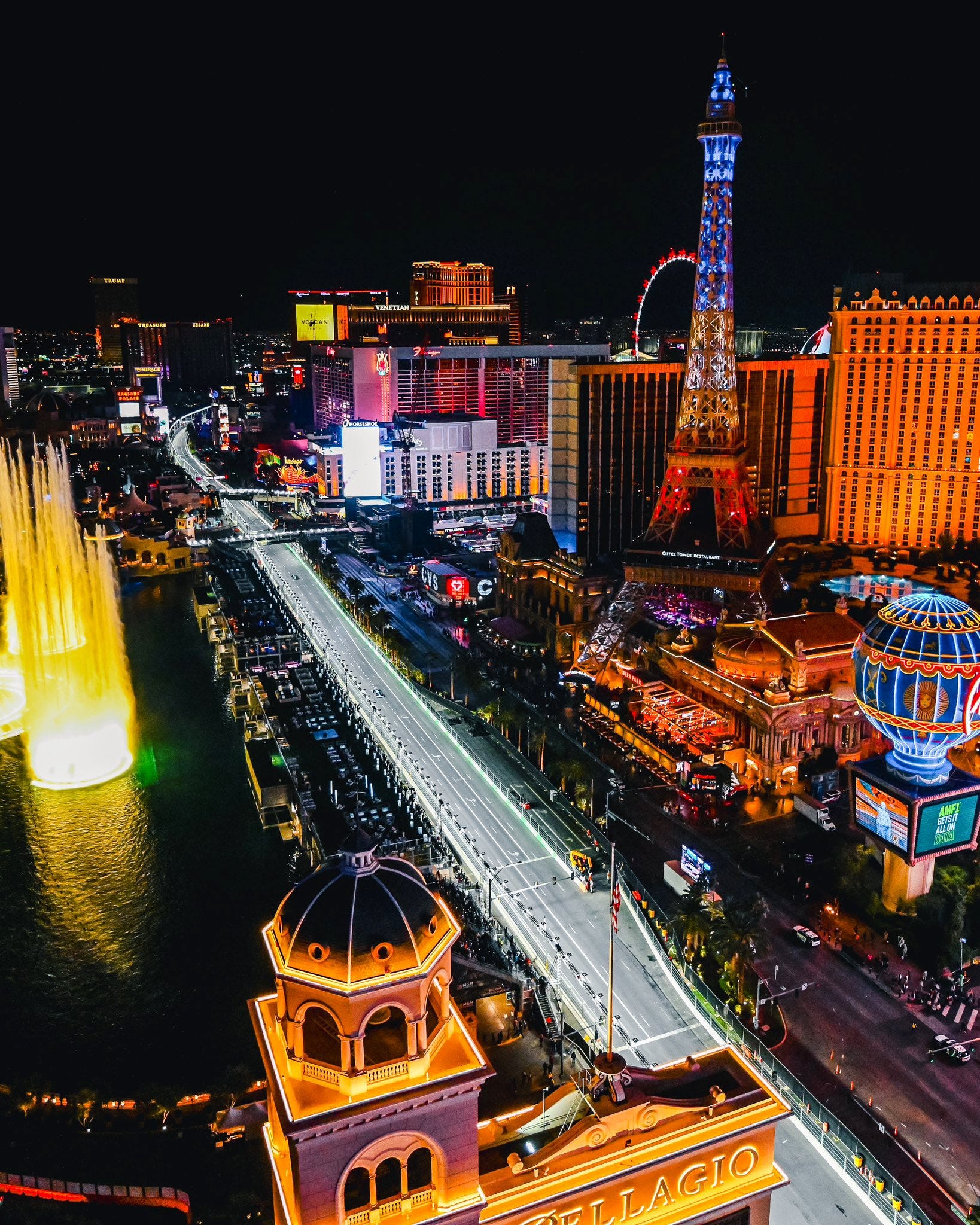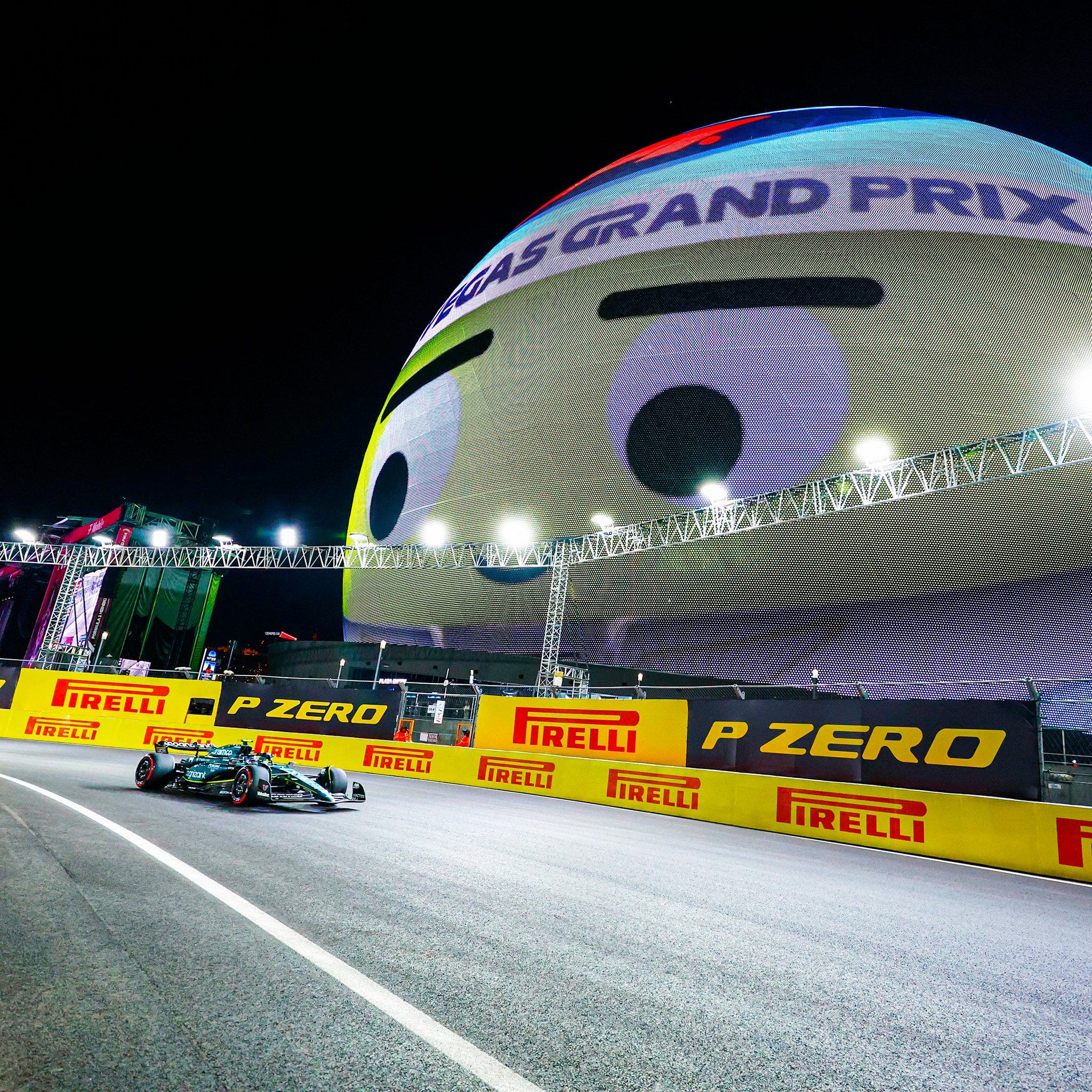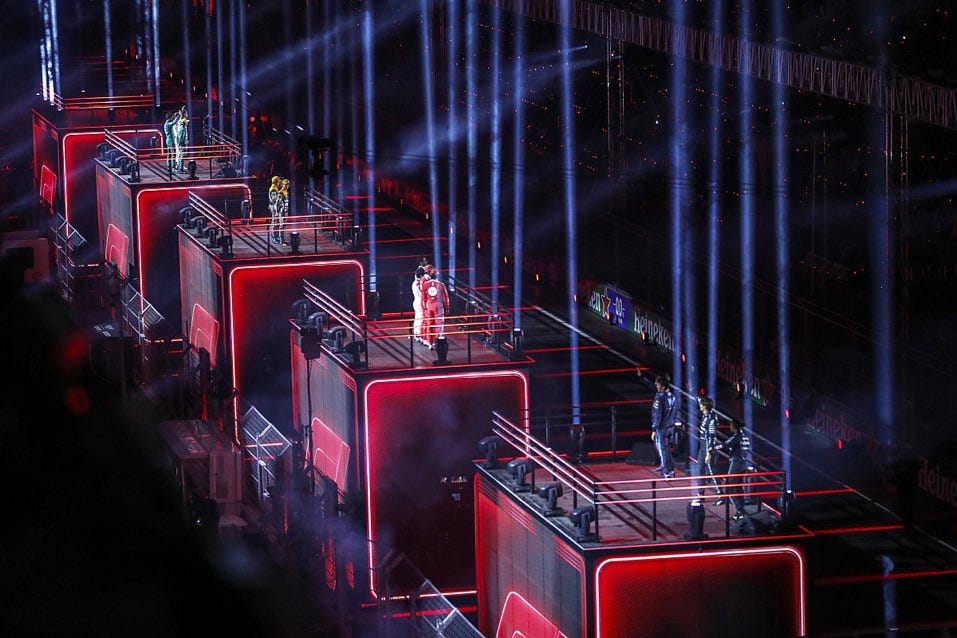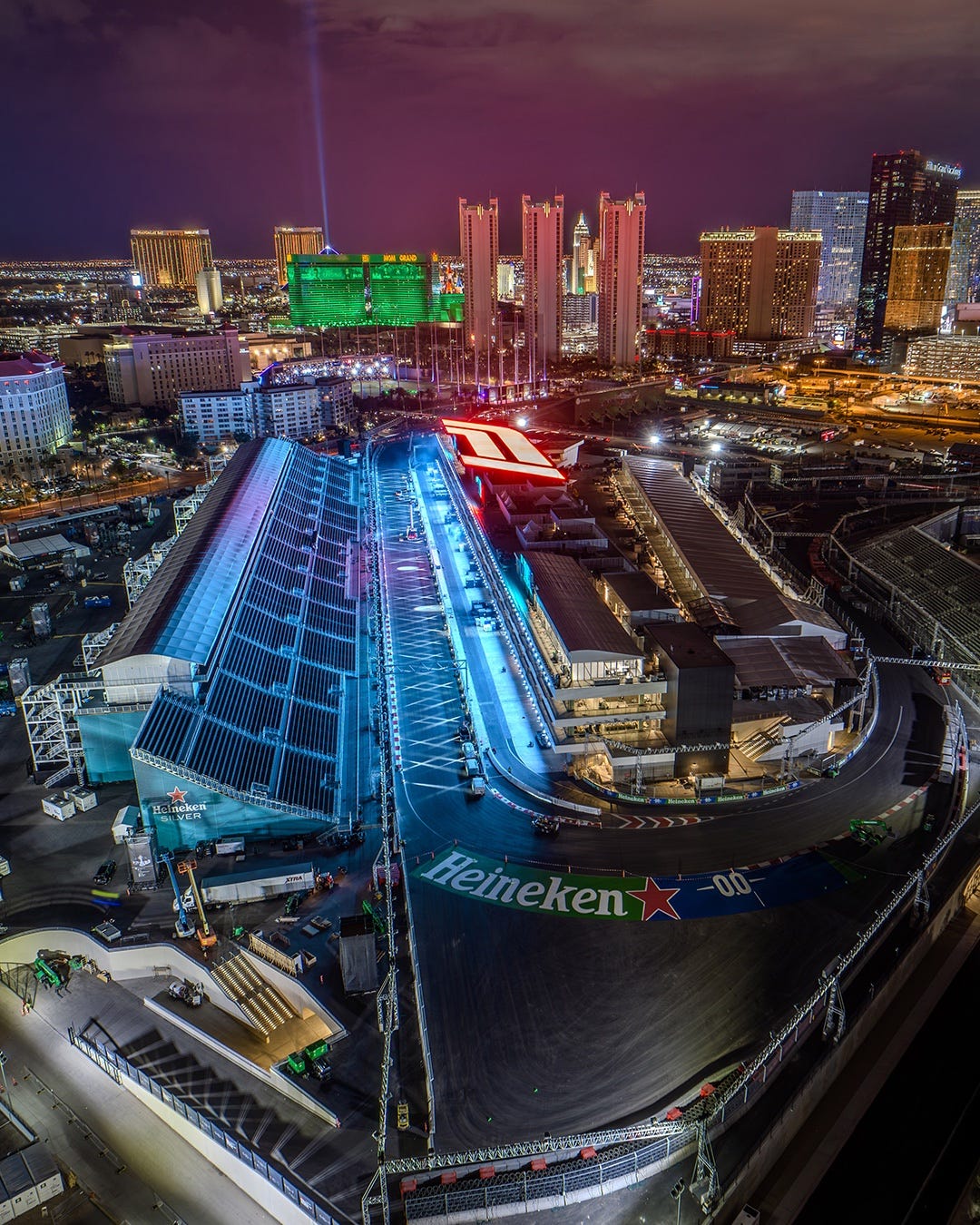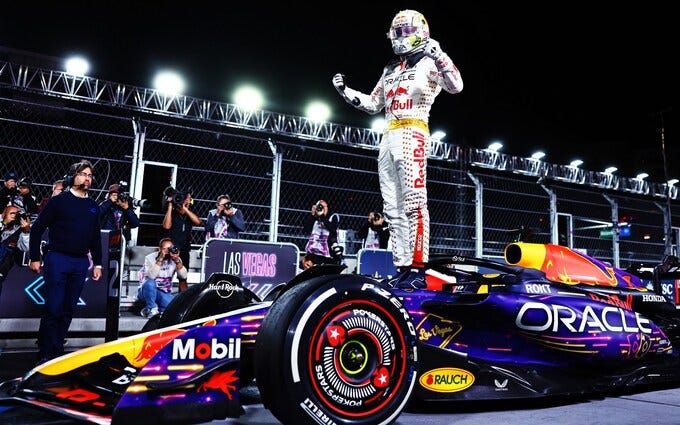An Honest Review Of F1’s Las Vegas Grand Prix
Huddle Up is a 3x weekly newsletter that breaks down the business and money behind sports. If you are not already a subscriber, sign up and join 100,000+ others who receive it directly in their inbox each week. Today’s Newsletter Is Brought To You By PLUNGE!Plunge is one of my favorite companies at the moment. Co-founders Michael Garrett and Ryan Duey got addicted to cold plunging at the beginning of the COVID-19 pandemic, but everything on the market was so expensive, so they built their own. Michael and Ryan built the first 20 units by hand out of their garage, and the company exploded as people like Dr. Andrew Huberman exposed the benefits of cold therapy to the masses. For example, cold plunging is proven to reduce joint pain, boost metabolism, optimize digestion, elevate mood, lessen muscle soreness, and more. Plunge has since started building saunas, too, and their products are by far the best I’ve seen on the market. The cold plunge is sleek and stylish. It can be placed anywhere inside or outside. It doesn’t require any plumbing, and it naturally filters itself while allowing you to experience perfectly chilled water (37°F) within minutes. So if you want to start enjoying all the health benefits of cold plunging (without all the hassle), go to plunge.com and get your tub today. And by the way…Plunge is offering all my readers $150 off your purchase when you use code “pomp” at checkout. Enjoy! Friends, The Las Vegas Grand Prix was one of the most controversial sporting events this year. On one hand, trouble started days before the race, with 10,000 unsold tickets and plummeting hotel prices. Then, it continued when Carlos Sainz sucked up a drain cover going 100+ mph, causing the cancellation of free practice 1 after just nine minutes. And it got even worse when F1 delayed free practice 2 until 3 AM local time, kicking fans out of their seats and sending them home with nothing more than a $200 gift shop voucher, eventually leading to a class action lawsuit representing 35,000 people. But on the other hand, the race was fantastic. We had contact, penalties, and a safety car. There were 82 overtakes — that ranked #2 this season to Zandvoort (112). Charles Leclerc passed Sergio Perez on the last lap to secure a second-place finish, and former F1 champion Jensen Button called Las Vegas the best street circuit on the calendar. So what was the race really like? Was it a disaster or everything we were told it would be? Well, the good news is that I was on the ground in Las Vegas last week, so today’s newsletter will provide some feedback on how I thought everything went. Ps. This newsletter is also available via audio as a podcast. Enjoy! Las Vegas Was Much Busier Than Social Media Made It SeemSocial media, specifically X/Twitter, was flooded with photos and videos of empty hotels and restaurants this weekend. It felt like some people were trying to show an accurate representation of what was happening, while others had a predetermined mindset that the race was a bad idea and were looking for confirmation. I feel that way because I visited several hotels (The Wynn, Venetian, Caesars, etc.), and all of them were packed. The Wynn, where I stayed, had thousands of people on the Casino floor every night, and restaurants were busy for breakfast, lunch, and dinner. Furthermore, people were spending money. Formula 1 merchandise is notoriously expensive — t-shirts will run you $100+ and sweatshirts can get up to $300+ — and every shop I saw had a flurry of people trying to buy things before they were gone. Pop-up shops, like Lewis Hamilton’s +44 collection, were also incredibly busy, and Sotheby’s even held a private auction at the Wynn, selling Tom Brady’s last NFL jersey for $1.4 million and Lewis Hamilton’s 2013 F1 car for $18.8 million — both records. That’s not to say the photos and videos you saw on social media were fake. They weren’t! But I think the major disconnect came from the type of people at F1 races. For better or worse, Formula 1 has always been a wealthy sport. Some hardcore fans try to deny this, but there is a reason why Rolex is the sport’s longest-standing partner. That’s also why the high-end restaurants were busy, and the Outback Steakhouse was empty. But when you add in the fact that 315,000 fans visited the racetrack over four days, significantly higher than the 200,000 to 225,000 average attendance across European races, the data indicates that the Las Vegas Grand Prix was plenty busy. Still, that doesn’t mean there weren’t issues — like F1 pricing out fans and locals. Formula 1 Needs To Stop Pricing Out Real Fans And LocalsIf you’ve been following the commentary on X/Twitter, you probably saw that celebrities like David Beckham, Brad Pitt, Justin Beiber, A$AP Rocky, Shaq, Bad Bunny, Daniel Craig, Rihanna, Martin Garrix, and Michael B Jordan attended the race. That’s not necessarily anything new for Formula 1 — Monaco is only on the calendar because of its history and star power — but I think F1 might be pushing it too far. For example, the cheaper restaurants on the strip were probably empty because the average person couldn’t afford $1,000+ tickets on race day. So not only is F1 pushing locals out of town, whom they disrupted for 12 months with road closures and street work, but F1 is also making it financially impossible for average fans to attend races. 2023 Average F1 3-Day Ticket Prices By Grand Prix
This price gouging is more prominent in the United States than anywhere in the world, and while you might be able to blame some of it on the secondary ticket market, it’s one of the main reasons European sports have more fan passion. Don’t believe me? Just attend a football match at San Siro or a Euroleague game in Serbia — there is much less of a corporate feel vs. a Warriors game in San Francisco. Tourists bring a more significant economic impact (via net new taxes). But $1,000+ tickets price out real fans, and it’s something F1 should be careful with going forward. Liberty Media Deserves Some Slack Given Their Impressive HistoryRed Bull’s Max Verstappen has become polarizing over the last few years. Part of it is because he (and the team) are so damn good — Verstappen has won 18 out of 21 races so far this year — but part of it is because he is so direct and unapologetic. This weekend, for instance, Max unloaded on the Las Vegas Grand Prix, calling it a “clown show” and even encouraging fans to “tear the place down.” But by the end of the weekend, Max had a different tone, saying he was excited to be back next year. I’m sure 80+ overtakes, and some good, hard racing helped improve Max’s opinion of Las Vegas. But regardless, Liberty Media deserves the benefit of the doubt. Think about it this way: Formula 1 was really struggling when Liberty Media purchased the business for $4.4 billion in 2016. The sport was losing millions of viewers, teams were going bankrupt, and F1’s future was uncertain. But Liberty Media stepped in, stabilized the business, and has grown it significantly over the last seven years. For example, Liberty Media made the teams financially stable by introducing a cost cap and grew the sport by partnering with Netflix on F1: Drive to Survive. But while those seem like logical steps today, many people didn’t think they were very smart at the beginning. And to continue to grow the sport, you must continue to innovate. So, sure, maybe some of the stuff at the Las Vegas Grand Prix ended up being over the line. But if you never cross the line, you’ll never know it’s there. And one thing is certain: no promoter on the planet would have invested $500 million on a single race, so let’s give Liberty Media the benefit of the doubt and see how year two goes. Las Vegas Now Has One Of The World’s Best Motorsports FacilitiesThe Las Vegas Grand Prix was the most talked about race this season. But Formula 1’s new 300,000-square-foot permanent paddock building definitely stole the show. The entrance was grand, including a “black carpet” for celebrities. The food was world-class, including seafood, pasta, steak, and dessert. And each team (and several brand partners) had massive spaces (with overlooks) to entertain their guests. For those that aren’t aware, Formula 1 (aka Liberty Media) purchased a 39-acre piece of land for $240 million last year. It was essentially an empty dirt parking lot located near the strip, but F1 transformed it by building a four-story permanent building. Miami also built a permanent paddock building earlier this year. But the new facility in Vegas is three football fields long and comfortably the nicest one in Formula 1. As I said, this is a significant investment by F1, and no other promoter on the planet would have invested $500 million of their own money on this project given the risk-reward. This is something the teams are very aware of — I talked to several F1 team members and executives, and all of them praised Liberty Media for what they have done for the sport over the last seven years — and it feels like this new building sets the standard. The Las Vegas Grand Prix was Liberty Media’s Test For Future EventsYou guys have heard me talk about it enough at this point, but the most interesting part about this race (to me) was that Liberty Media was serving as its promoter. This is the first time in history that Formula 1 has promoted its own event rather than just accepting a hosting fee and allowing someone else to do it. And it feels like this strategy, given they can make more money by taking on more risk, is here to stay. For example, I recorded a podcast this week with Jefferson Slack (Managing Director of the Aston Martin F1 team), and he told me that he thinks F1 will have 25 races by 2030 (up from 22 today), and Liberty Media will be self-promoting three of them. This is a guess, of course. But the 25 events make sense as a ceiling given the logistical challenges of the sport, and I also agree with Liberty Media promoting three races. It’s essential for F1 not to mess with current promoters — some of them do an excellent job and make it easy on F1 — so there will be a balance between adding new races and taking over for insolvent promoters, eventually landing us around three. Las Vegas was a test to make sure they could do it. But provided F1 can turn a profit (this year or in the future), the buzz is that they will do more of it in the future. So there you have it. Overall, I had an excellent experience at the Las Vegas Grand Prix. It certainly felt more elevated than other events. Although, that doesn’t necessarily make it better, as Monza was probably my favorite sporting event ever. Regardless, some of the negativity was overblown. No one wants to spend hundreds of dollars on tickets only to see nine minutes of practice, and Carlos Sainz could have gotten seriously injured due to the drain cover issue. But still, drain covers are notoriously tricky at street circuits, as we have also seen incidents in Monaco, Baku, and Singapore, and it was nice to see the rest of the weekend go off without a hitch. Bottom line: Let’s give Liberty Media the benefit of the doubt and see how it improves. If you enjoyed this breakdown, please consider sharing it with your friends. I hope everyone has a great day. We’ll talk on Wednesday. Listen to the Joe Pomp Show on Apple or Spotify. Join my sports business community on Microsoft Teams. Interested in advertising with Huddle Up? Email me. Your feedback helps me improve Huddle Up. How did you like today’s post? Loved | Great | Good | Meh | Bad Huddle Up is a 3x weekly newsletter that breaks down the business and money behind sports. If you are not already a subscriber, sign up and join 100,000+ others who receive it directly in their inbox each week. Huddle Up is free today. But if you enjoyed this post, you can tell Huddle Up that their writing is valuable by pledging a future subscription. You won’t be charged unless they enable payments.
© 2023 |


